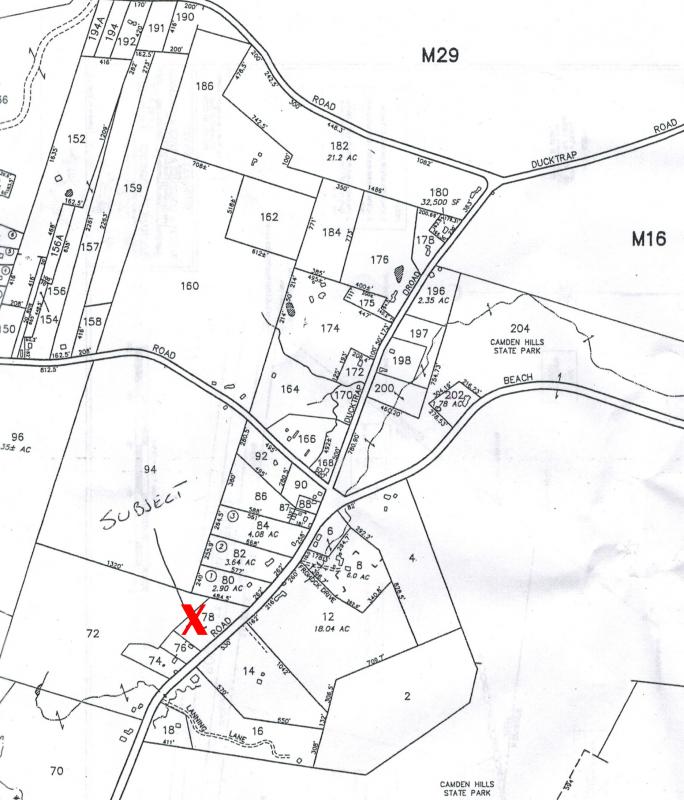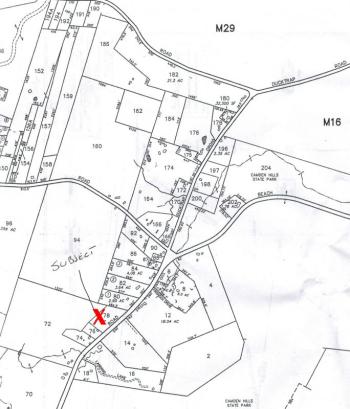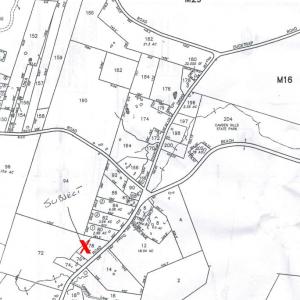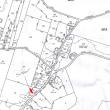Rockport voters to consider extending sewer, changing zoning rules for library, CMP
ROCKPORT — Rockport voters have three municipal measures, along with the five statewide bond proposals, to consider Nov. 5 when they go to the polls. In addition to deciding whether to expand the sewer system further down Route 1, voters will decide if the public institutions, such as the library, in Rockport Village should become nonconforming, and if utility substations will be allowed in a residential district.
Read the entire Rockport municipal warrant here.
Utility substations and installations
The proposed change to the 904 Residential District asks voters to allow public utility installations there as special exceptions. Currently, substations and other utility structures are considered nonconforming use; therefore, they cannot be expanded.
Central Maine Power approached the town office earlier this year asking permission to expand its Meadow Street substation, which is in the 904 district. Current zoning, however, prohibited that. Apparently, it was permissible prior to 2005 to expand, but when the ordinance was amended that year, such utility structures were dropped from the language, perhaps inadvertently.
Such structural expansions are allowed in just about all the other districts in town, according to Town Planner Bill Najpauer.
Read about the proposed zoning change here.
Stream Protection District amendment and public institutions
A debate over the future of Rockport Public Library has resulted in a proposed ordinance amendment that, if approved, would allow the library to expand in Rockport Village, if voters so agreed. There has been discussion about moving the library to the former Rockport Elementary School site on West Street, a proposal that engendered heated debate.
On July 23, citizens discussed at an informational meeting the reasons that the existing Rockport Public Library could not expand on its current site.
The library lot lies in two of the town’s zoning districts: downtown and shoreland overlay. It is in the shoreland overlay by virtue of its being adjacent to Lily Pond Brook, which runs down from Lily Pond to the harbor. It is possible, within zoning parameters, to expand the library's footprint, or add another level there (with an ADA-compliant elevator), if the town votes to include libraries on the list of conforming uses. Currently, a library in this shoreland overlay district is not a conforming use. To make it conforming would require a town vote.
Subsequent to that meeting, the Ordinance Review Committee crafted language to ask voters if they want to make the library a conforming use.
If it is approved, it also must pass muster with the Maine Department of Environmental Protection.
Read the entire amendment here.
Sewer extension
Rockport is proposing to extend the town’s sewer system along a stretch of Route 1 from Elwood Avenue to Sea Light Lane next summer, with an associated cost of $1.1 million. Town leaders are hoping to float a 20-year $889,667 bond to cover the cost, if voters approve, and to use money collected from an already-established tax increment financing district to pay installments on the loan. The loan is expected to carry a 2 percent interest rate.
Rockport Village property owners, as well as a number of homes and businesses along routes 90 and 1 (south from the intersection at the Market Basket to Elwood Ave.), currently send their waste to the Camden system.
The Glen Cove area, including Penobscot Bay Medical Center, ties into the Rockland system.
Rockport is justifying the latest extension because:
“The cost of borrowing money (interest rates) is at historic lows,” the brochure said. “The construction industry is still recovering from the economic downturn, and bids for construction will likely reflect this by being lower than they might be in future years. It will likely never be cheaper to do this project than it is now.”
And, the town said, by connecting the town’s two separate wastewater systems will allow greater flexibility in terms of pumping wastewater to Camden and Rockland.
“In the future, should either of those treatment plants have a reduction in their ability to accept Rockport’s wastewater; the town would then be able to shift more of its waste water to the other plant,” the town said.
Businesses along Route 1 are hindered from growth and employing more people because their existing independent sewer systems are too small, the town said.
“By providing sewer service to these businesses, they will be able to continue their operations and perhaps expand,” the brochure said. “If the businesses expand, or if new commercial development occurs in this area, the additional property taxes generated will be captured by the TIF, and these funds will then become available to help with further sewer expansions in the future to ultimately connect the two wastewater systems.”
The Select Board, acting as the town’s waste water commissioners, said the project is manageable, “both in terms of cost and scope.” It also provides the possibility of further commercial developing along Route 1 in that area. The town said it is likely that Maine Water, which provides water service to properties in the area, would also extend their water mains at the same time, and share some of the construction costs.
“Also, the town will be applying for grants tied to businesses in this part of town either maintaining jobs or creating new jobs as a result of the sewer extension,” the board said.
Operation of the existing sewer systems are currently funded by users. Rockport taxpayers do not fund the system’s operation. The Select Board is asking for town-wide approval of the bond, but the payoff is expected to be done with revenue accrued from the Commercial Street (Route 1) TIF plus user fees (also known as debt service fees) from those who own property along the new extension, said Board Chairman William Chapman.
That TIF money stream is captured annually from property taxes paid within the Commercial Street TIF zone that was established more than 10 years ago to accommodate the sewer extension to Camden National Bank’s Fox Ridge office complex and the State of Maine Cheese manufacturing facility. The town borrowed approximately $800,000, combined that with a $400,000 grant from the State of Maine, extended the sewer, created a TIF district and is now collecting money from that entire project.
Every year, property owners within the TIF district pay taxes. Whatever growth in assessed value since 1999 (when the TIF was created) on those properties translates to increases in property taxes. It is the differential increase in property taxes from that baseline 1999 value which gets captured into a special TIF fund, not the general fund. Those captured tax dollars theoretically increase as the property value increases, thereby increasing the value of the TIF fund.
The TIF fund helped to pay for the demolition of the old RES school on West Street. It is anticipated that the TIF fund will have $90,000 by June 30, 2014, which will enough money to cover the first $56,000 anticipated payment of the proposed sewer extension project.
To accomplish this, the town, if voters approve, borrow a principal of $889,667 at a 2 percent interest rate. Over 20 years, the total cost to taxpayers is estimated to be $1.1 million. The annual cost to taxpayers would be approximately $56,000.
Rockport’s current debt load is $10.9 million. Outstanding debt includes:
$280,000, previous sewer extension
$150,000, salt and sand shed
$64,571, Camden sewage treatment plant
$64,636 Rawson Ave. pump station
$3.4 million, Five Town CSD, new high school
$6.9 million, School Administrative District elementary school expansion
Editorial Director Lynda Clancy can be reached at lyndaclancy@penbaypilot.com; 207-607.6657
Event Date
Address
United States

































